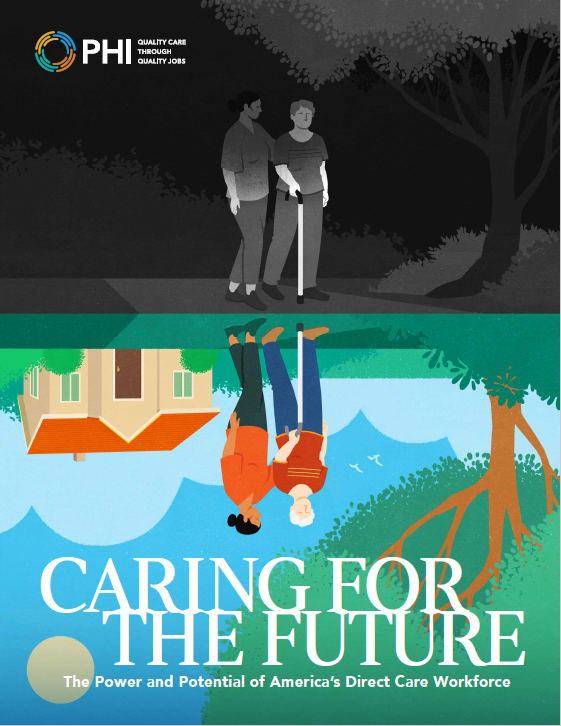The COVID-19 pandemic has profoundly impacted the direct care workforce and the entire long-term care system, claiming thousands of lives across settings and straining an already fractured and scattered system. While direct care workers have been deemed “essential” during this crisis, the poor quality of their jobs—as evidenced by low wages, limited benefits, inadequate training, and a general lack of respect and recognition—has consistently placed them and their clients at risk from this devastating virus. The current national response to rescue the long-term care sector and help our country recover must accomplish what was missing from the first stages of this pandemic: ensure that direct care workers and their employers have adequate resources to navigate and emerge from this unprecedented health crisis.
RECOMMENDATIONS
To support direct care workers and the long-term care sector navigate and learn from the COVID-19 crisis, we recommend the following:
Direct federal and state resources at direct care workers and their employers. The recent enactment of the American Rescue Plan provides significant resources for responding to the COVID-19 crisis. Of note, the plan’s $12 trillion package includes a provision that will boost the federal matching rate (FMAP) for Medicaid spending on home and community-based services by 10 percentage points between April 1, 2021, and March 31, 2022. Among other investments, states should designate this funding—and future COVID-19-related resources—to support direct care workers and improve their jobs by increasing compensation and benefits; strengthening training, advancement opportunities, and recruitment and retention supports; funding COVID-19-related needs (Personal Protective Equipment – PPE, testing, vaccination, workplace safety, etc.); and bolstering data collection on this workforce, including COVID-specific data.
Commission a “lessons learned” analysis on COVID-19 that focuses on long-term care and direct care workers. The COVID-19 crisis has brought into sharper focus the many challenges facing direct care workers and the entire long-term care sector. These issues should be thoroughly analyzed and dissected for lessons learned, with the findings informing future policy and practice and helping prevent future calamities of this nature. This in-depth analysis should be informed by direct care workers and their advocates, among many other stakeholders.
Study and develop the workforce of temporary nursing aides who have been hired under a 2020 waiver from the Centers for Medicare & Medicaid Services (CMS). In March 2020, CMS waived the long-standing training and certification requirements for nursing assistants employed in nursing homes, which allowed for a significant though uncounted number of workers to become temporary nursing aides and meet the urgent staffing needs of nursing homes around the country. To support and develop this sector of workers, Congress should pass The Nurses CARE Act of 2021, which would make temporary nurse aides eligible for “prolonged work as nurse aides” if they have completed at least 80 hours on the job and are certified as competent via a state exam, through an apprenticeship program, or by their employers. Moreover, to better understand the size, profile, experiences, and impact of the temporary nurse aide workforce, the federal government should fund a rapid study of this workforce.








